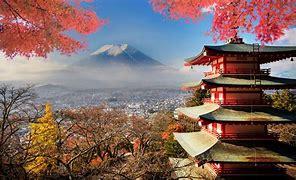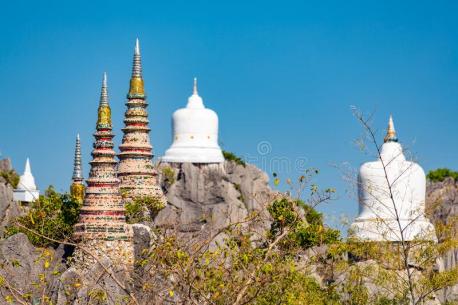Results: Pagodas
Published on 01/17/2023
According to Wikipedia, a pagoda is an Asian tiered tower with multiple eaves common to Nepal, India, China, Japan, Korea, Myanmar, Vietnam, and other parts of Asia. Most pagodas were built to have a religious function. Most often they are Buddhist but sometimes Taoist and were often located in or near a vihara (Buddhist monastery). The pagoda traces its origins to the stupa of ancient India.

QUESTIONS
GO to COMMENTS
Comments
1.
1.
Chinese pagodas are a traditional part of Chinese architecture. In addition to religious use, since ancient times Chinese pagodas have been praised for the spectacular views they offer, and many classical poems attest to the joy of scaling pagodas. Chinese sources credit the Nepalese architect Araniko with introducing the pagoda to China. Would you travel to China to see their pagodas?

Yes
29%
688 votes
No
71%
1712 votes
2.
2.
The oldest and tallest pagodas were built of wood, but most that survived were built of brick or stone. Some pagodas are solid with no interior. Hollow pagodas have no higher floors or rooms, but the interior often contains an altar or a smaller pagoda, as well as a series of staircases for the visitor to ascend and to witness the view from an opening on one side of each tier. Most have between three and 13 tiers (almost always an odd number) and the classic gradual tiered eaves. Are you familiar with pagodas?

Yes
42%
1011 votes
No
58%
1389 votes
3.
3.
In some countries, the term may refer to other religious structures. In Vietnam and Cambodia, due to French translation, the English term pagoda is a more generic term referring to a place of worship, although pagoda is not an accurate word to describe a Buddhist vihara. The architectural structure of the stupa has spread across Asia, taking on many diverse forms specific to each region. Many Philippine bell towers are highly influenced by pagodas through Chinese workers hired by the Spaniards. Have you ever seen a pagoda in person?

Yes
20%
479 votes
No
80%
1921 votes
4.
4.
The origin of the pagoda can be traced to the stupa (3rd century BCE). The stupa, a dome shaped monument, was used as a commemorative monument to house sacred relics and writings. In East Asia, the architecture of Chinese towers and Chinese pavilions blended into pagoda architecture, eventually also spreading to Southeast Asia. Their construction was popularized by the efforts of Buddhist missionaries, pilgrims, rulers, and ordinary devotees to honor Buddhist relics. Japan has a total of 22 five-storied timber pagodas constructed before 1850. Have you ever heard of stupas before?

Yes
15%
348 votes
No
86%
2052 votes
5.
5.
Thailand's Floating Pagodas sit on mountaintops in a non-hunting area of Lampang. Wat Chaloem Phra Kiat Phrachomklao Rachanusorn or generally known as the Floating Pagodas were built upon faith of the locals and Buddhist monks in the area taking 10 years to finish in the early 2000s. These pagodas dotting the mountain peaks were each carried up piece by piece by a revered local monk and a team of nearly 50 workers. Do you find the Floating Pagodas to be visually stunning?

Yes
57%
1359 votes
No
43%
1041 votes
COMMENTS


